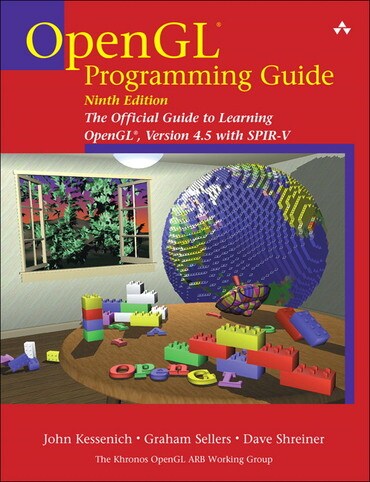
OpenGL Programming Guide: The Official Guide to Learning OpenGL, Version 4.5 with SPIR-V, 9th edition
Published by Addison-Wesley Professional (July 25, 2016) © 2017
- John Kessenich ARM, Inc.
- Graham Sellers ARM, Inc.
- Dave Shreiner
Title overview
OpenGL Programming Guide, 9th Edition, presents definitive, comprehensive information on OpenGL 4.5, 4.4, SPIR-V, OpenGL extensions, and the OpenGL Shading Language. It will serve you for as long as you write or maintain OpenGL code.
This edition of the best-selling “Red Book” fully integrates shader techniques alongside classic, function-centric approaches, and contains extensive code examples that demonstrate modern techniques. Starting with the fundamentals, its wide-ranging coverage includes drawing, color, pixels, fragments, transformations, textures, framebuffers, light and shadow, and memory techniques for advanced rendering and nongraphical applications. It also offers discussions of all shader stages, including thorough explorations of tessellation, geometric, and compute shaders.
New coverage in this edition includes
- Thorough coverage of OpenGL 4.5 Direct State Access (DSA), which overhauls the OpenGL programming model and how applications access objects
- Deeper discussions and more examples of shader functionality and GPU processing, reflecting industry trends to move functionality onto graphics processors
- Demonstrations and examples of key features based on community feedback and suggestions
- Updated appendixes covering the latest OpenGL libraries, related APIs, functions, variables, formats, and debugging and profiling techniques
The full text downloaded to your computer
With eBooks you can:
- search for key concepts, words and phrases
- make highlights and notes as you study
- share your notes with friends
eBooks are downloaded to your computer and accessible either offline through the Bookshelf (available as a free download), available online and also via the iPad and Android apps.
Upon purchase, you'll gain instant access to this eBook.
Time limit
The eBooks products do not have an expiry date. You will continue to access your digital ebook products whilst you have your Bookshelf installed.
